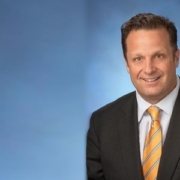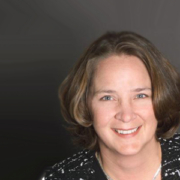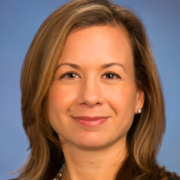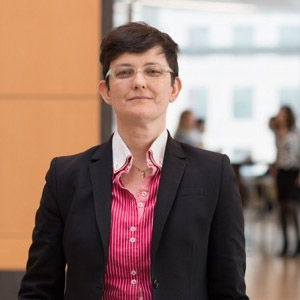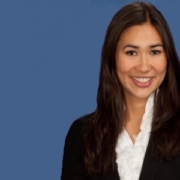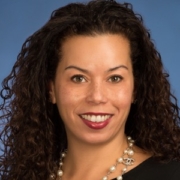Men Who Get It: Justin Gmelich, Global Head of Credit Trading, Management Committee Member; Goldman Sachs
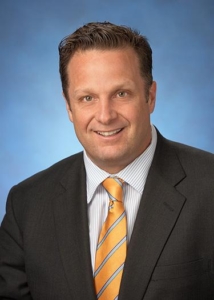 “Embracing diversity is like a subway car — it should run underneath everything you do.” Justin Gmelich, who has been with Goldman Sachs for 17 years and was named partner in 2004, practices what he preaches bringing his devotion to diversity to both the workplace and to his family and life experiences.
“Embracing diversity is like a subway car — it should run underneath everything you do.” Justin Gmelich, who has been with Goldman Sachs for 17 years and was named partner in 2004, practices what he preaches bringing his devotion to diversity to both the workplace and to his family and life experiences.
The father of six, including four daughters, Gmelich is intimately familiar with the dynamics of diversity. He understands the opportunities and challenges ahead for his own daughters in the workplace, drawing from his personal experience and the insight from his wife, a former mortgage bond trader, and sister, who also works on Wall Street.
“This awareness definitely weighs on how I think about the world and what I’d like to see happen on Wall Street in general, and at Goldman Sachs in particular,” Gmelich says.
“Building a better framework to get the most out of the organization requires a different viewpoint around diversity. I’m keenly aware of the dynamics at Goldman and committed to working to bolster our culture and atmosphere to allow all our people to succeed.”
Starting Them Young
As part of Gmelich’s passion for education, he and his wife have invested both time and energy in creating the next generation of leaders.
They developed a scholarship program in their son’s name to fund private education for at-risk kids through high school. The program has resulted in more than three dozen graduates around the country.
These philanthropic endeavors migrated into the development of a need-blind STEM high school, Trinity Hall in Monmouth, N.J. Their oldest daughter, a sophomore, is part of the inaugural class.
Gmelich says that the goal of the high school is to change the way our society teaches girls about their job opportunities. “There’s some cultural bias that steers young women away from rigorous quantitative career paths,” he says, adding that Trinity Hall focuses on coding, physics, math and other skills needed to succeed in STEM careers.
Mentoring at Work
This allegiance to raising up the next generation of successful women is complemented by his current work at Goldman Sachs. “I wear the hat at work and at home,” he says.
To that end, he is active in a program at Goldman Sachs called the Women’s Trader Initiative, which he says is meant to demystify the trading function, as well as provide support and sponsorship for women traders in a department where there are fewer female role models.
He says that his goal as a mentor is to be involved in people’s careers by acting as a sounding board. “The best traders are those who can learn from other people — if you’re an effective mentor, you’re trying to prevent your mentees from making the same mistakes you might have made. I think it creates empathy when you share your own war stories of how best to navigate the job.”
Over the years Gmelich has found that one secret to career success is to embrace the tough conversations and seek appropriate feedback. “Many of the most successful people in the organization are the ones who want to spend 55 minutes of a 60 minute feedback session knowing what they can do better. That’s what makes people grow and develop.”
He says that it’s the obligation of mentors to offer that feedback through the lens of constructive criticism. “We can disagree but we don’t have to be disagreeable.”
Gmelich knows that the best way for leaders to advance those conversations is to underscore the importance of communication and accessibility “You have to use the type of mitigating language that lets people know they can speak their mind, by setting up a communication system where people are comfortable coming to you early and often.”
One way to nurture that feeling of trust is for leaders to show vulnerability and empathy, so that colleagues can see that even if he has a senior role, he’s overcome challenges in his career like anyone else.
“There’s a lot of humanity around that,” he says. “Empathy really matters and whether the recipient agrees with your perception or not, they appreciate that you are trying to give visibility to their career – someone is thinking about how to help them succeed.”
Diversity Must Be Omnipresent
Gmelich doesn’t believe in the common perception that the benefit of diversity advocacy goes to those who receive it. “We mistake the beneficiary,” he says. “With socioeconomic leveling I believe those who benefit equally are those who are getting the exposure to different viewpoints when we open the door.”
He says that when you look around Goldman Sachs, the decision-making process is strengthened when diverse groups actively participate and bring new approaches and perspectives to solving traditional problems. “It’s critical for any organization to realize that.”
As Gmelich demonstrates through his personal and professional life, diversity isn’t a switch you can flip on and off. “You have to practice what you preach in every aspect of your life.”
He advocates that those who want to expand their world spend time volunteering, whether at a high school or another non-profit that speaks to them.
“The more you do it, the better you get,” he says. “When I think about the interplay between my diversity work at Goldman Sachs and my philanthropic endeavors, you could say I’m a believer, both on and off the job.”

